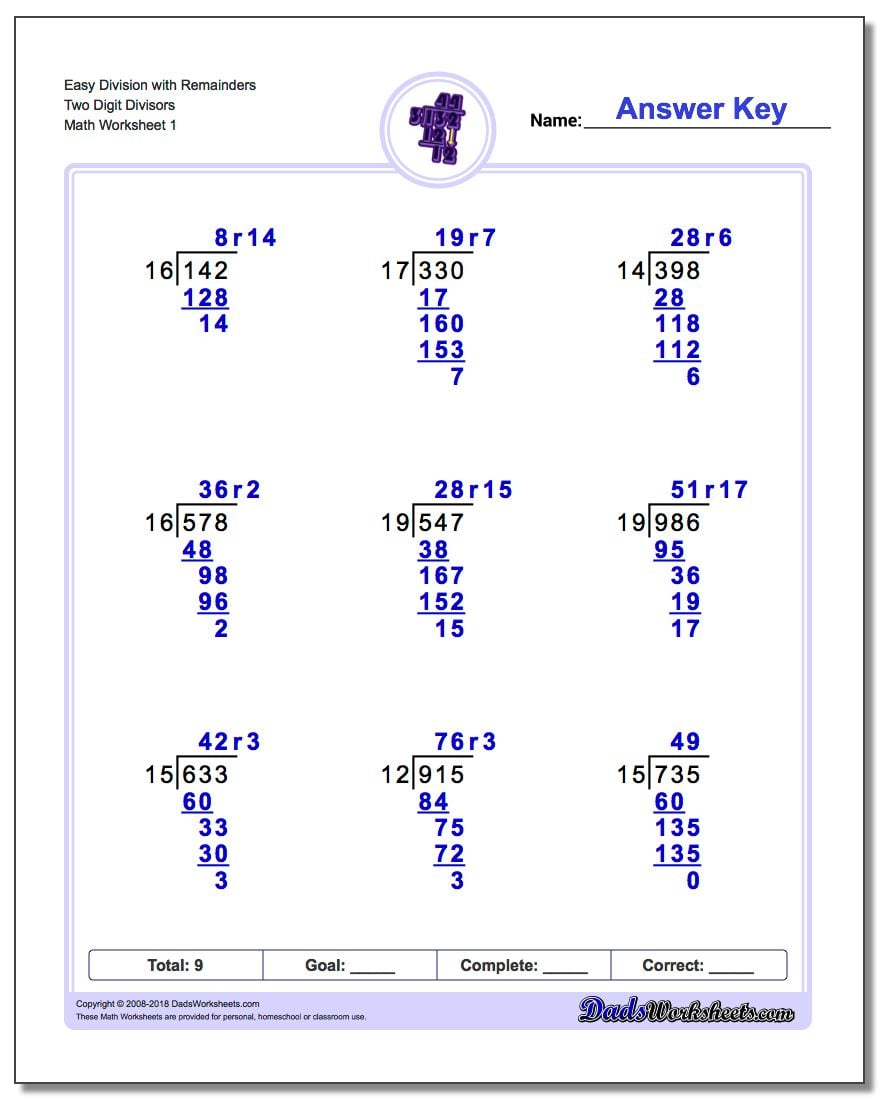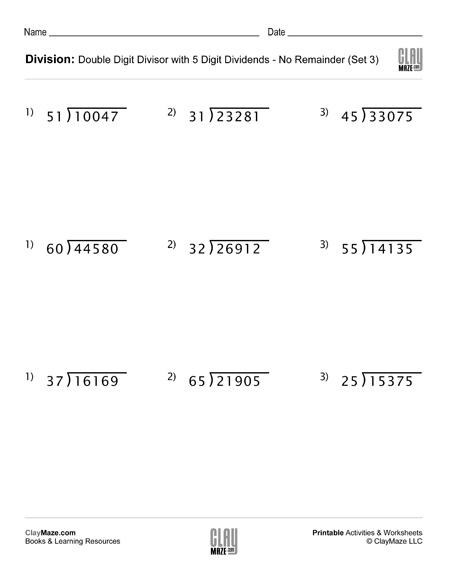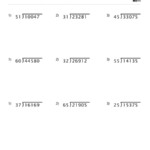Division Worksheets 2 Digit Divisor – Divide worksheets are an excellent method to learn math concepts. They are a great help while getting ready for tests in arithmetic. They come in many formats, such as whole numbers or decimals.
entire numbers
A worksheet that focuses on division of whole numbers could aid young children in understanding the fundamental idea behind mathematical operations on whole numbers. These worksheets can be used as homework assignments and also to improve division skills. These worksheets illustrate the topics by using real-world examples as well as pictures.
You can find a wide range of worksheets for division. They include worksheets with multiple digits, or long divisions. Multi-digit integers need to be divided into divisors. Then, determine the remainder and the percent. Long division worksheets follow a standard procedure.
There are worksheets which divide whole numbers using fractions, as well as ones that divide traditional numbers. This is an excellent method to help students develop their reasoning and make the subject second to you.
Rule of Divisibility
Utilize worksheets on division with divisibility rules to help kids grasp the concept of divisibility. They assist children to learn and solve division problems. These worksheets are also a great way to aid children in remembering and understanding information faster.
Children are asked to mark the numbers that are divisible by the specified numbers on a worksheet on divisibility rules. These worksheets are designed to assist kids improve their decision-making abilities and fine motor skills. They are useful for helping children track their progress, and to identify gaps in their learning.
To determine if a particular number is able to be divided by its digits, you must divide it. This means that the number must be divisible by the total of the digits, which must be even in the last digit.
Fractional division
It’s a great way to teach fractions by using worksheets that teach splitting fractions. This type of practice helps prepare students for algebra in the later grades.They develop a knowledge of fractions and problem-solving techniques as a result.
A majority of students struggle with fractional division every day at the classroom. The issue lies in how confusing the concept can seem. Fraction division worksheets can be used by children to avoid confusion. They can use them to make sure they are confirming their answers. Students might feel more comfortable in class if they have worksheets that assist them in dividing fractions.
Word problems, diagrams and images are all part of the worksheets that are designed to divide fractions. The worksheets let students practise writing mixed fractions. They are available in many difficulty levels. The worksheets are appropriate for children aged 3 to 6.
Decimal division
Dividing whole and decimals are similar operations. To divide a Decimal, the decimal location is moved to one side. The rounding process is up and down depending on the number which follows the decimal point.
Before you divide a decimal you first need to determine the quotient. The sum of the divisor and the divisor is known as decimal quotes. It can be a multiple either of a single integer or or even of 100.
In the majority of cases the decimal quotient a number is rounded up to a certain amount of decimal points. This is done by making use of trailing zeros. This is because the dividend is valued at a of 0.4 and that divisors have the value of 4.88 and the division 48.8 by 4 is classified as a decimal subdivision.
To divide large numbers divided using power of 10.
The power of ten is a fundamental idea. It can be very useful when it comes to dividing massive numbers. No matter if you’re dividing decimals or whole numbers you should be able to alter the decimal point.
When you divide a large number, the decimal location must be moved at least twice as often as it is in the power of ten. The result is that the amount increases while the initial one is decreased. When it’s smaller the decimal point moves to the right; when it is larger the decimal point will shift towards the left. The exponent will be reduced by the amount that the number changes when it is less than one.
You have to subtract the exponents in the divisor from these exponents. This is the scientific notation.






